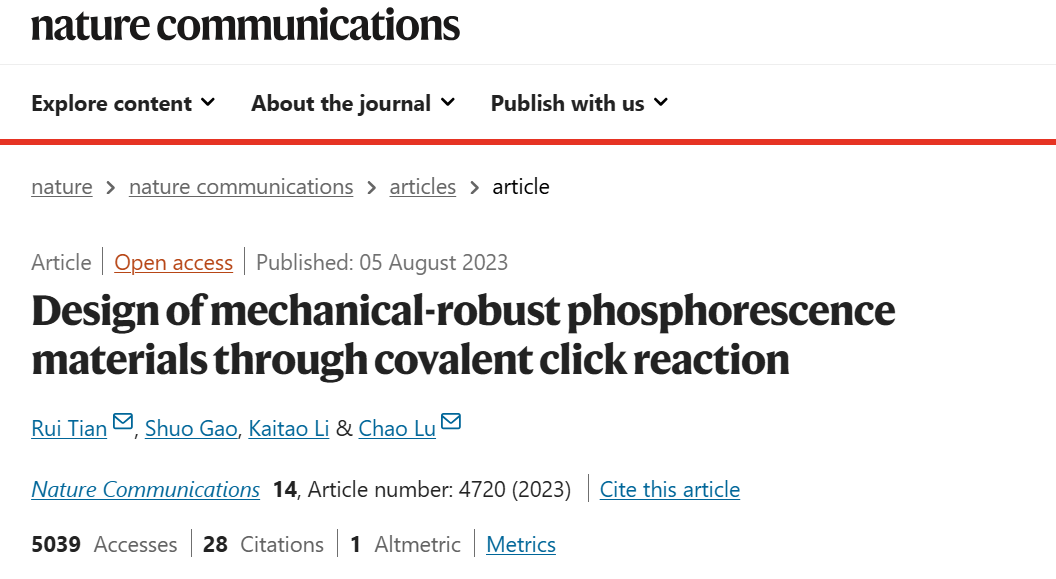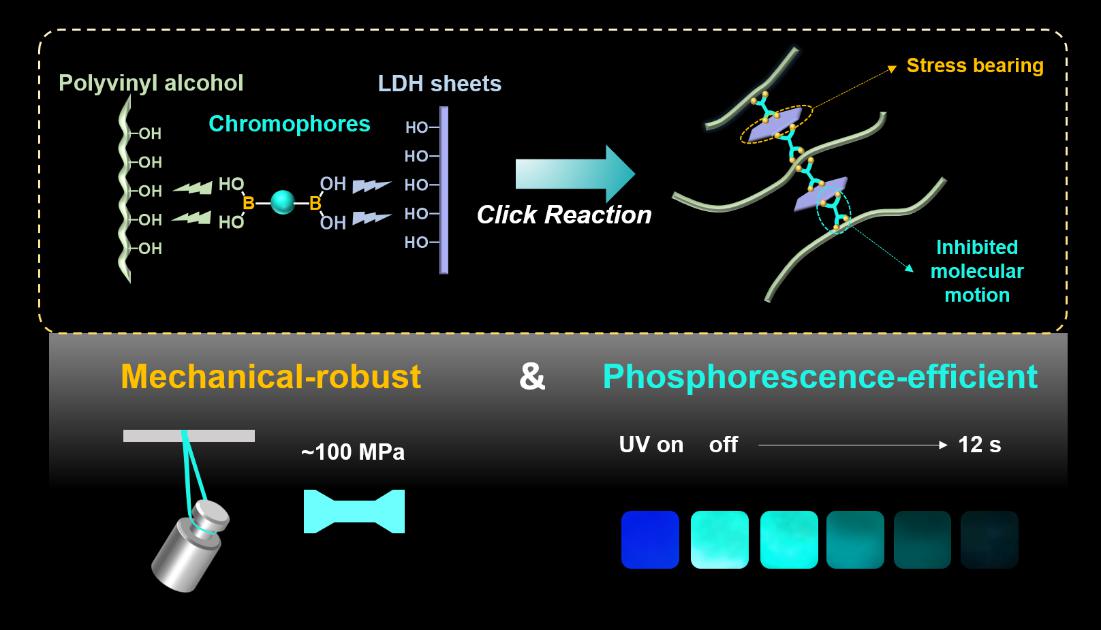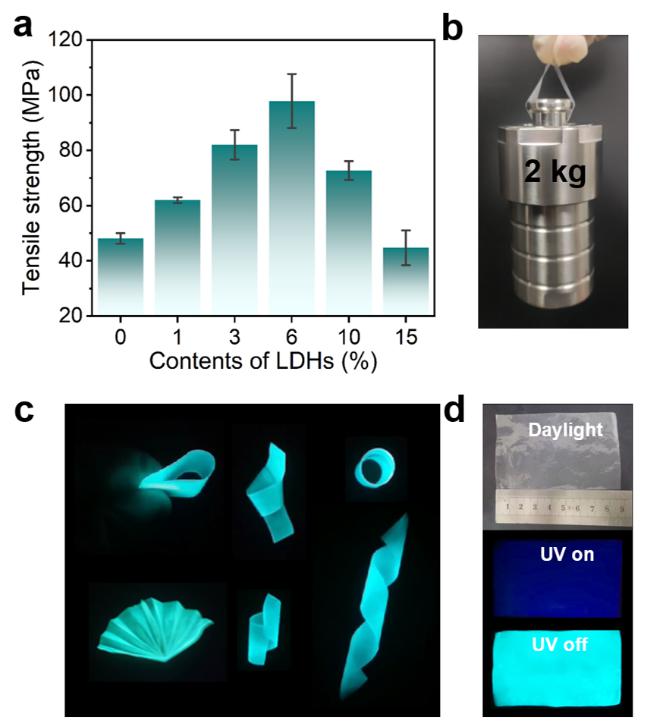
In the recent years, polymer-based room-temperature phosphorescent materials have attracted widespread attention because of their low cost, easy processing and good biocompatibility. Noteworthy that the simultaneous requirements of robust mechanical properties and decent phosphorescence performances are demanded to prepare flexible RTP materials.
The addition of inorganic components to polymer-based RTP materials provides a rigid environment that inhibits nonradiative transitions of chromophores and enhances the mechanical properties of polymer matrix. However, the current construction of composite materials is generally based on the hydrogen bonding and electrostatic interaction between polymers and inorganic components, suffering from the weakened interaction by the moisture in the air and thus the quenched phosphorescence or mechanical properties.
To solve this problem, Prof. Chao Lu’s group has introduced the facile B‒O click reaction to prepare room-temperature phosphorescent materials with high mechanical strength based on the covalent bond between the inorganic layered double hydroxide (LDHs) with rich hydroxyl groups, chromophores (BPBA) containing boric acid groups, and polyvinyl alcohol (PVA) matrix. The as-prepared composites exhibited an ultra-long lifetime of 1.45 s and decent mechanical strength of 97.9 MPa, which could find great potential in the applications as anti-counterfeiting devices, security labels and organic light-emitting diodes.

The prepared LDHs-BPBA-PVA exhibited cyan phosphorescence emission at 495 nm, with a phosphorescent lifetime of up to 1.45 s, which could be traced to more than 12 s by the naked eyes (Fig. 2). The origin of phosphorescence was ascribed to the BPBA molecules which featured with π-π* transitions and n-π* transitions. In comparison with the pristine BPBA or PVA-BPBA, the phosphorescent properties of LDHs-BPBA-PVA composites were greatly enhanced. Such an enhancement could be ascribed to the multiple B‒O covalent bonds between PVA, BPBA and LDHs, which effectively inhibited the non-radiative decay of excited triplet excitons and enhanced the intersystem crossing process in the composite films. In addition, the excellent oxygen barrier performance of LDHs could prevent the diffusion of ambient oxygen in the composite films and suppress the quenching of triplet excitons to improve RTP efficiency.

The mechanical properties of the composite films were further studied. The tensile strengths of the pristine PVA and 6% LDHs-PVA film were 45.2 and 63.8 MPa, respectively.Notably, the tensile strength of 6% LDHs-BPBA-PVA reached 97.9 MPa after the covalent bonding, which was 2.17 times that of PVA. The significantly promoted mechanical properties indicated that BPBA played a key role as a cross-linking agent to reinforce the interfacial interaction between organic PVA and inorganic LDHs phases. The 6% LDHs-BPBA-PVA film could achieve high mechanical strength and significant phosphorescence performance at the same time, suggesting the significance of the established covalent crosslinking network. In addition, the composite films could be bent, twisted and folded into various shapes and different sizes, and bright cyan phosphorescence could be observed throughout the entire area. Such a mechanical-reliable, phosphorescent-robust and scalable film could find great potential in flexible 3D objects with repeatable folding and crimping properties in a large scale.

It is believed that the proposed strategy could be further applied for the design and construction of functional composites with advanced performances.
Information for the manuscript:
Title: Design of mechanical-robust phosphorescence materials through covalent click reaction
https://www.nature.com/articles/s41467-023-40451-2
The first author of the article is Prof. Rui Tian, the second author is Shuo Gao (supervisor: Prof. Rui Tian), and the corresponding authors are Prof. Rui Tian and Prof. Chao Lu.
